Microscopes for children
These notes have been prepared to assist those with little or no experience of microscopy who wish to equip a young person with a microscope. A microscope makes a wonderful gift and can be surprisingly low cost; it reveals a completely new and wonderful hidden world that has captured many at an early age who then go on to develop careers in science. However, care is needed as some microscopes aimed at children can lead to disappointment and frustration in use; we hope that this article guides you in making the correct decision and avoiding potentially expensive mistakes.
The essential requirements are that the microscope should:
- be fit for purpose,
- be suitable for the young person to use independently and safely,
- make microscopy activity an enjoyable experience,
- represent good value for money.
Hand lenses and magnifiers
These (some with lighting built in) come in many shapes, sizes and qualities and magnify in the range ×5 to ×20. They are very useful mostly for preliminary examination of specimens but are unlikely to satisfy a child looking for a microscope.
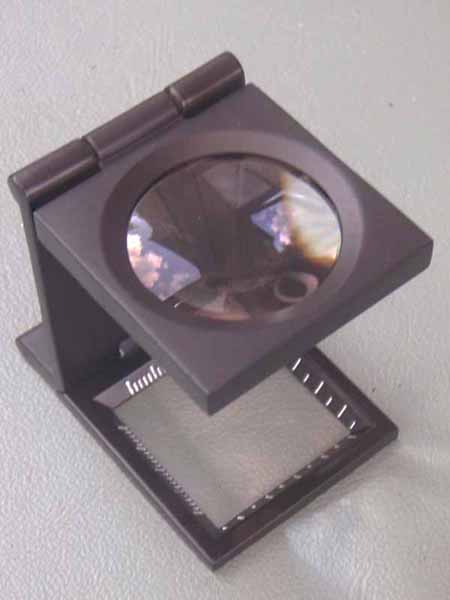
Linen counter (a simple magnifier)
Toy microscopes
Toy microscopes are widely available but sadly often represent poor quality and poor value for money. They often include an attractive-looking kit of mounted specimens and dissection tools, and advertise high magnification. In practice, the optical quality is often very poor and the high magnification stated gives only a very dim image and is much higher than is useful in practice. This often leads to frustration in use, and the microscope and its kit may soon be abandoned. That being said, many Quekett Club members started in this way and were captivated for life by what they discovered!
Mini-naturalist’s microscopes
Very low cost (around £15) microscopes are now available from the Natural History Museum and via the Internet.
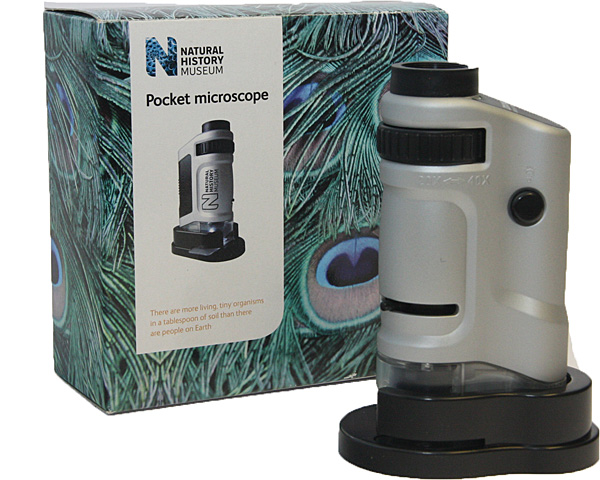
These include an in-built light and are very easy (and safe) for young children to use; they can simply be pushed against any object in the home or garden and a magnified image will be obtained without any skill or effort! Being plastic, these microscopes are very resistant to damage (an essential requirement for some children!) but give surprisingly good images. These microscopes represent excellent value for money and are an ideal way of seeing if children under 10 will be interested in a more advanced instrument in the future. Many adults also use these as cheap ‘pocket’ microscopes for walks and holidays.
USB / computer microscopes
Microscopes that link directly to a computer via a USB lead have been available for several years and a number of makes are available. Versions for casual use may cost a few tens of pounds; professional versions are also available costing several hundred pounds (or more). They usually have a limited magnification range up to ×200 for which a stand will be required to avoid shaking of a hand-held microscope; any higher magnification is not useful. Most are limited to use with incident light and have built-in illumination, but they are difficult to use with pond water which is an ideal subject to excite children. USB microscopes do enable pictures to be recorded very easily but, surprisingly, many children find looking at a computer screen to be ‘routine’ and show much more enthusiasm for looking down the eyepiece of an optical microscope.
Stereomicroscopes
The stereomicroscope is an excellent type of microscope with which to get started and provides a three-dimensional image of any subject put underneath it.
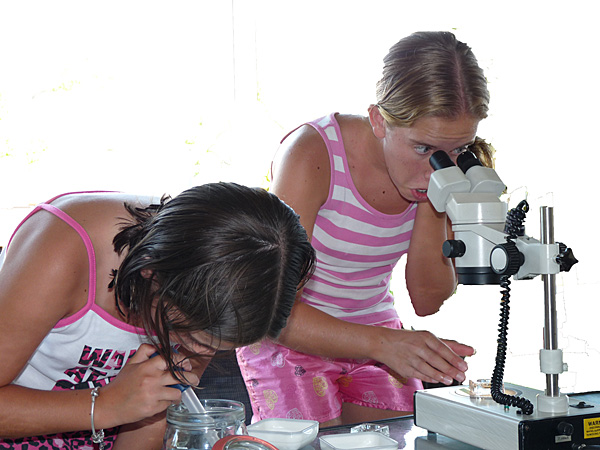
It also serves experienced microscopists well for many of the tasks they wish to perform. The type of specimens that children typically want to examine can be seen in adequate detail; the confusion that is often caused by seeing a vast amount of detail of a small part of a comparatively large specimen is avoided. There are several advantages to choosing a stereomicroscope for children:
- The instrument is easy to set up and use.
- A vast range of interesting items can be examined without the need for preparation or glass slides.
- There is plenty of space in which to manipulate specimens and, if the object is moved, the image moves in the same direction.
- Images of specimens have a three-dimensional quality.
Few, if any, stereomicroscopes fall into the “Toy” category and almost any model available will give, at least, reasonable results. The only potential disadvantage is that children under the age of 10 may not be able to use both eyepieces as the microscope eye-tubes may not adjust close enough.
The Royal Microscopical Society approves one stereomicroscope for use in primary schools, the SciChem S-05 Stereo Microscope.
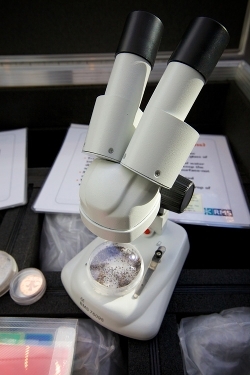 SciChem S-05 Stereo Microscope
SciChem S-05 Stereo Microscope
Low-power monocular microscopes
These are essentially like stereomicroscopes but with only one eyepiece. They will not, of course, create a three-dimensional image but have all the other assets of a stereomicroscope. Yes, the image does appear to be “the right way round”! These are very good instruments for young people and are the type that the Royal Microscopical Society formerly used for its Microscope Activity Kit. They are sold by Brunel Microscopes as their Brunel DM1 Stereomicroscope.
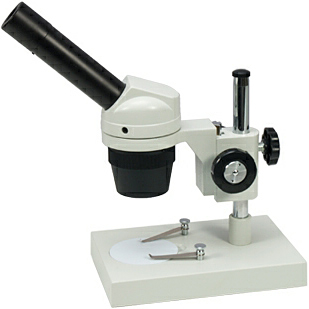 Brunel DM1 Stereomicroscope
Brunel DM1 Stereomicroscope
High-power (compound) microscopes
The compound microscope is the ‘traditional’ type of microscope used in laboratories and hospitals and is used to examine either microscopic specimens, or very fine structure of larger specimens that have been specifically prepared to make them transparent. It is not the best instrument for young children, but may be suitable for teenagers, especially if the microscope is to help with school science. Compound microscopes designed for serious use are usually built to an ‘RMS standard’ to ensure that lenses are interchangeable and can be upgraded; asking the dealer if the microscope is ‘RMS standard’ is a good way of ensuring that the instrument is of acceptable quality.
Some things to bear in mind before considering this type of microscope:
- Some practice is needed to get the instrument set up properly.
- Prepared specimens are required; these are usually thin so that light can be passed through them from below. However, simple mounts of many objects can be made for examinations at low powers.
- There is little room between the specimen and the lens immediately above it, giving little scope for manipulation of the object or shining light on it from above.
- If the specimen is moved, the image moves in the opposite direction.
- Magnifications in the range ×40 to ×400 are the most useful; higher magnifications are very rarely required and are best avoided until the need and skill has developed.
The Royal Microscopical Society approves one compound microscope for use in secondary schools, the BMS 1001 RMS Microscope.
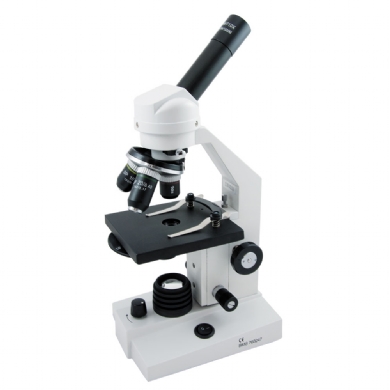 BMS 1001 RMS Microscope
BMS 1001 RMS Microscope
Where to buy
Sadly, there are very few shops that sell suitable microscopes; occasionally a photographic dealer may be able to offer a limited range of instruments. There are a few specialised mail-order sellers of microscopes who can be relied upon to give good advice and sell a suitable range of instruments; these are listed in the Links section of our website.
Internet auction sites are useful for second-hand microscopes, which can represent excellent value for money. Do seek advice before purchasing however, to know what potential defects or damage to look out for.
Finally, the Quekett Microscopical Club is always happy to help and encourage parents and children. Don’t hesitate to contact the Club. And remember, a microscope given to a child can be for life not just for Christmas!

